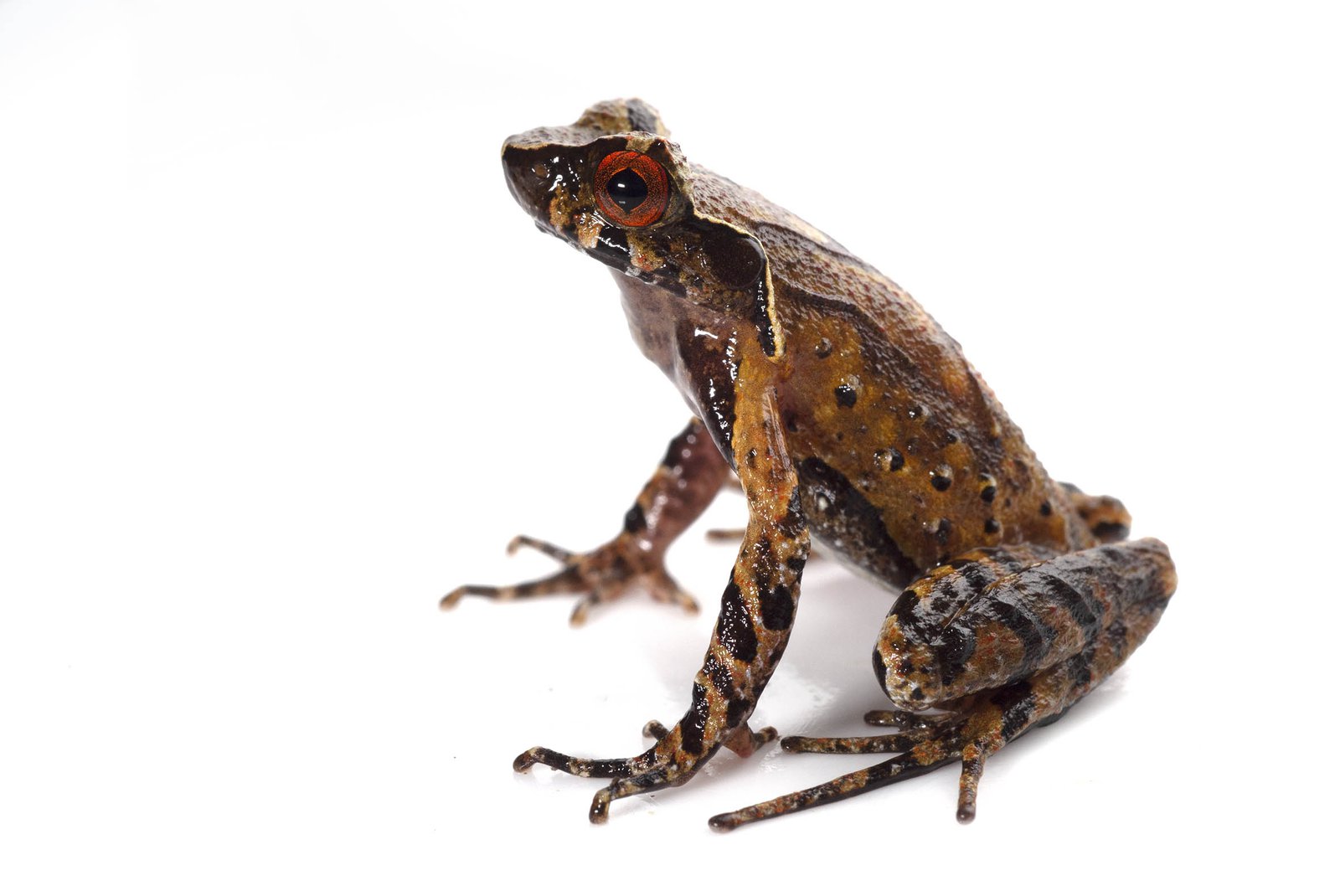Two new Horned Frog species found on Vietnam’s highest peak
Two new, and likely highly threatened, frog species have just been revealed.

© Australian Museum
Two new Horned frog species, the Mount Fansipan Horned Frog (Megophrys fansipanesis) and Hoang Lien Horned Frog (Megophrys hoangliensis), have just been discovered in the Hoang Lien Range of northern Vietnam. Unfortunately, the habitat of the new species is under threat. The discovery highlights just how little is known about this imperiled region, and how important the area is for biodiversity conservation.
Mount Fansipan in the Hoang Lien Range is the highest mountain in Vietnam, reaching 3,143 m above sea level. The Range is known to be home to more than 80 species of amphibian, with new species still regularly being discovered. Unfortunately, the area is also a focus of development, spurred by tourists flocking to the area to enjoy the cool climate and amazing views.
Because of the Hoang Lien Range’s importance, and how much threat the forest and its inhabitants are in, this area has been the focus of research at the Australian Museum for a decade, with five collaborative expeditions in search of amphibians in the range since 2007.
The two new frog species were first encountered during amphibian surveys in the Hoang Lien Range in 2012, but initially we weren’t sure if they were named species or not. Horned frogs are really tricky frogs to identify. They tend to look very similar to each other (a generally brownish frog with soft “horns” above the eyes). So, getting enough information to confirm their identity required a detailed look at not only their appearance, but also their DNA and their advertisement calls (each frog species tends to have very different advertisement calls, even if they look incredibly similar).
Obtaining recordings of the calls of both frog species took several years. Most frog species simply won’t call unless the time of year and weather is just right- and these frogs were no exception! When we finally heard their high-pitched, barking calls, we had to stand in steep rocky streams at night, trying to not disturb the frogs so that they would call again, whilst simultaneously trying to avoid getting our recording equipment wet in the frequent rain and mist! These important call recordings formed the last piece of the puzzle to allow us to confirm to the world that these two new Horned Frogs are both new species, and give them their official names.
Both new frog species are so far only known from a relatively small area of rugged, high-elevation forest. Unfortunately, this area is also undergoing habitat loss and degradation, largely due to the development of tourism infrastructure. Because of this, both frog species are already likely to be threatened with extinction. We hope that this discovery, and our ongoing work to highlight these amazing amphibians in this important area, will help ensure that both species are calling from the mountains for many decades to come.
Dr Jodi Rowley, Curator of Amphibian & Reptile Conservation Biology
Australian Museum Research Institute & UNSW
More information
- Tapley, B., Cutajar, T., Mahony, S., Nguyen, C.T., Dau, V.Q., Luong, A.M., Le, D.T., Nguyen, T.T., Nguyen T.Q., Portway, T., Luong, H.V., & Rowley, J.J.L. (2018). Two new and potentially highly threatened Megophrys Horned frogs (Amphibia: Megophryidae) from Indochina’s highest mountains. Zootaxa. 4508: 301–333.
- Ain’t no mountain high enough! Two new frog species found on Vietnam’s highest mountain. ZSL News.
Acknowledgements
This work was a collaboration among researchers from ZSL (Zoological Society of London), the Australian Museum Research Institute and Centre for Rescue and Conservation of Organism, Hoang Lien National Park, the Natural History Museum (London), Vietnam Academy of Science, Hanoi National University of Education and Hong Duc University. The work was funded largely by the Ocean Park Conservation Foundation and the Mohamed bin Zayed Species Conservation Fund.

